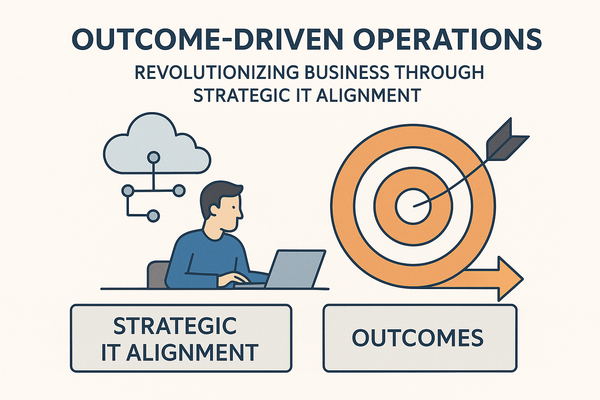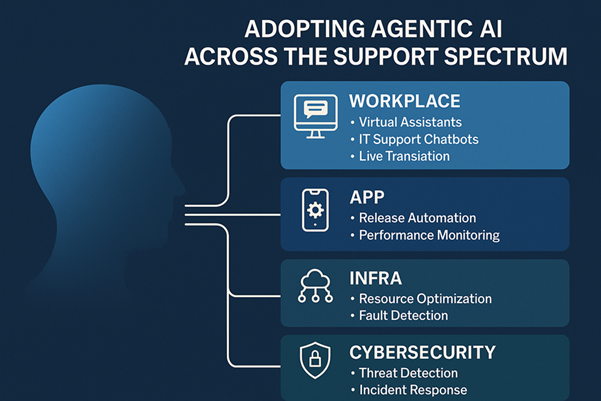Bridging the Gap Between IT and Business in Enterprises
Enterprises disconnect IT & Business. IT uses IT metrics; Business needs outcomes. Service providers meet IT contracts, but lack perceived business value. Bridge the gap by aligning IT to business outcomes via shared goals & outcome metrics. Providers must demonstrate real business impact.

The Persistent Disconnect
One of the perennial challenges within enterprises is the constant disconnect between IT and Business. While IT departments make significant investments to enhance efficiencies, resiliency, and user experience, these investments are not necessarily aligned with the overarching business objectives. Regardless of the industry—be it travel & hospitality, energy & utilities, food & beverages, or BFSI—IT departments frequently pursue their own goals, which are typically measured through IT-specific metrics such as uptime, availability, and customer satisfaction (CSAT) just to name a few. However, businesses expect IT to serve as an enabler, ensuring that their goals and objectives are translated into measurable outcomes. This misalignment often means that IT metrics do not effectively resonate with business outcomes, highlighting a fundamental issue for service providers.
The Service Provider Dilemma
Often, when service providers commence their engagements, they are measured against IT metrics stipulated within the contract. This approach results in a homogeneous experience for the client, as every service provider tends to:
- Introduce automation strategies aimed at operational efficiencies
- Discuss operational synergies that yield economies of scope
- Experiment with various operating models to meet requirements
- Integrate partner ecosystems to provide the latest solutions
- Enhance end-user experience through self-help or self-heal mechanisms, portals, etc.
However, these initiatives are often perceived as merely addressing the contract requirements without delivering substantial added value. A potential differentiator could be to elevate the overall approach by integrating business outcomes. This would often necessitate that service providers go the extra mile by delivering business-aligned services with the appropriate skills and expertise to bridge the gap between IT and business.
Aligning IT Metrics with Business Outcomes
To bridge this gap, IT departments and service providers must shift their focus from traditional IT metrics to business outcomes. This transition requires a deeper understanding of the business's goals and how IT can support them. By aligning IT initiatives with business objectives, IT can transform from a cost center to a strategic enabler. The following steps can help achieve this alignment:
- Business Understanding: IT must develop a profound understanding of the business's strategic objectives, key performance indicators (KPIs), and critical success factors.
- Collaborative Goal Setting: Jointly define goals that bridge IT capabilities and business needs. This includes establishing shared KPIs that reflect both IT performance and business outcomes.
- Integrated Planning: Ensure that IT planning and business planning processes are integrated. This involves collaborative road mapping and investment planning.
- Outcome-Based Contracting: Instead of traditional IT metrics, contracts with service providers should focus on outcome-based metrics that reflect business objectives.
- Continuous Feedback: Establish a feedback loop between IT and business units to continuously refine processes and improve alignment.
The Role of Service Providers
Service providers play a crucial role in this transformation. To differentiate themselves, they must:
- Bring Business Acumen: Service providers need to understand the client's business deeply and tailor their services to support business objectives.
- Showcase Business Value: Demonstrate how their IT solutions contribute to business success through case studies, testimonials, and measurable outcomes.
- Focus on ROI: Highlight the return on investment (ROI) of IT projects in terms of business metrics such as revenue growth, customer satisfaction, or market share.
- Innovation and Agility: Be proactive in introducing innovative solutions and flexible models that adapt to the evolving business needs.
- Strategic Partnerships: Leverage partnerships to bring in specialized skills and technologies that can drive business transformation.
Conclusion
The disconnect between IT and business in enterprises is a longstanding issue, but it is not insurmountable. By shifting the focus from traditional IT metrics to business outcomes, enterprises can ensure that their IT investments drive significant business value. Service providers, by aligning their services with business objectives and demonstrating tangible business benefits, can play a pivotal role in bridging this gap. This alignment will not only enhance IT's role as a strategic enabler but also create a collaborative environment where IT and business work in tandem to achieve shared goals.


